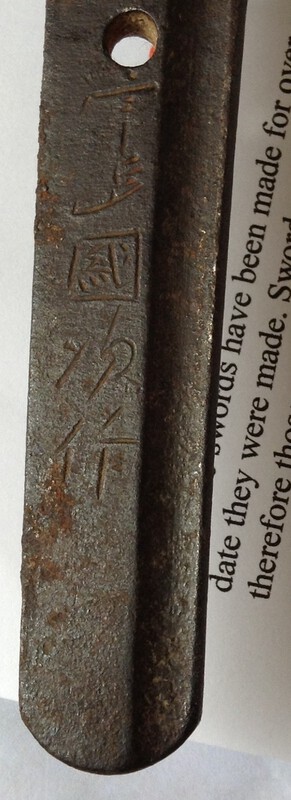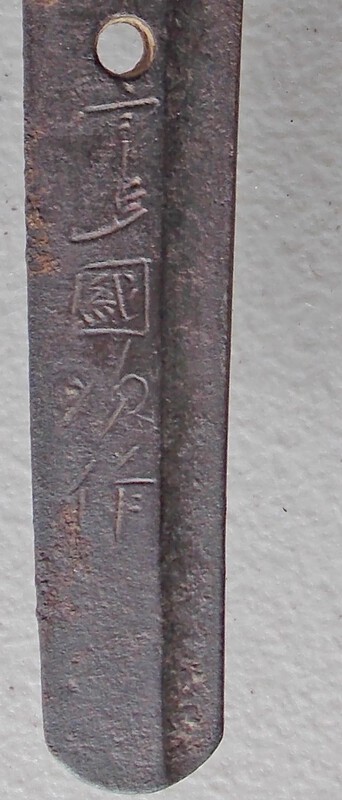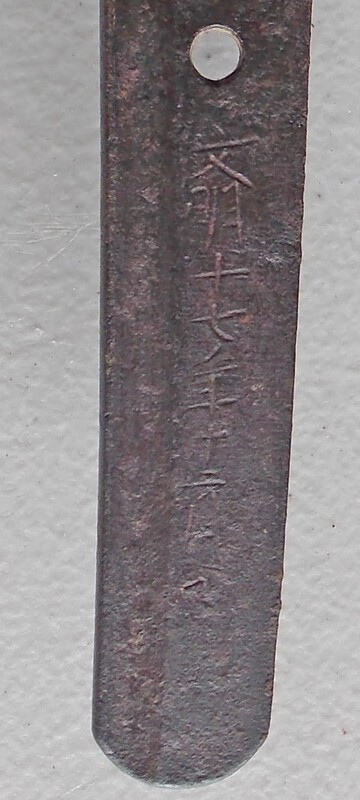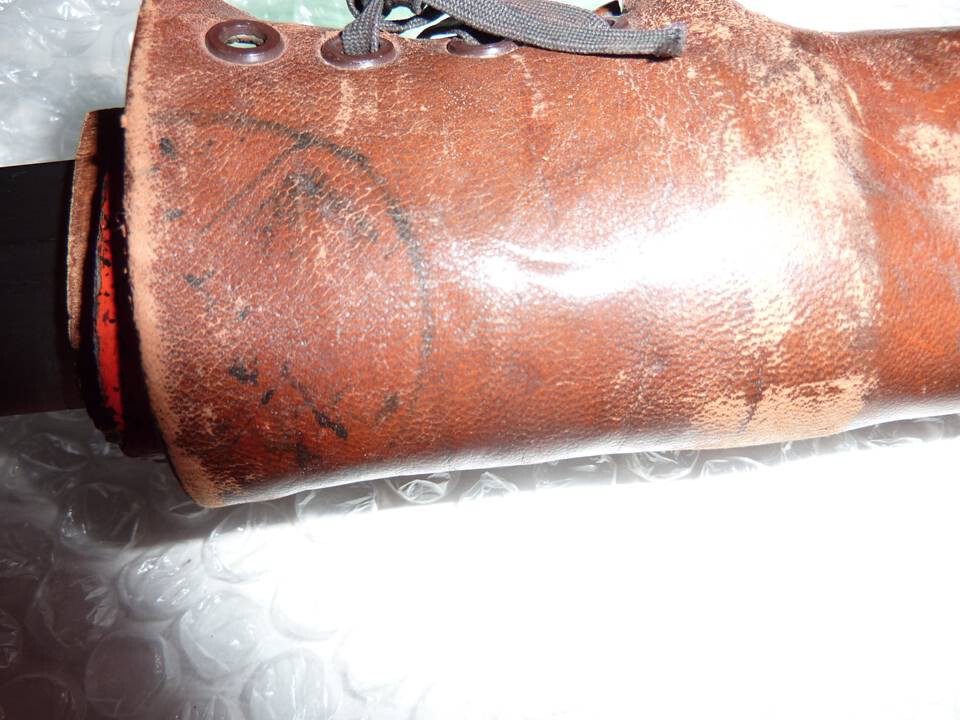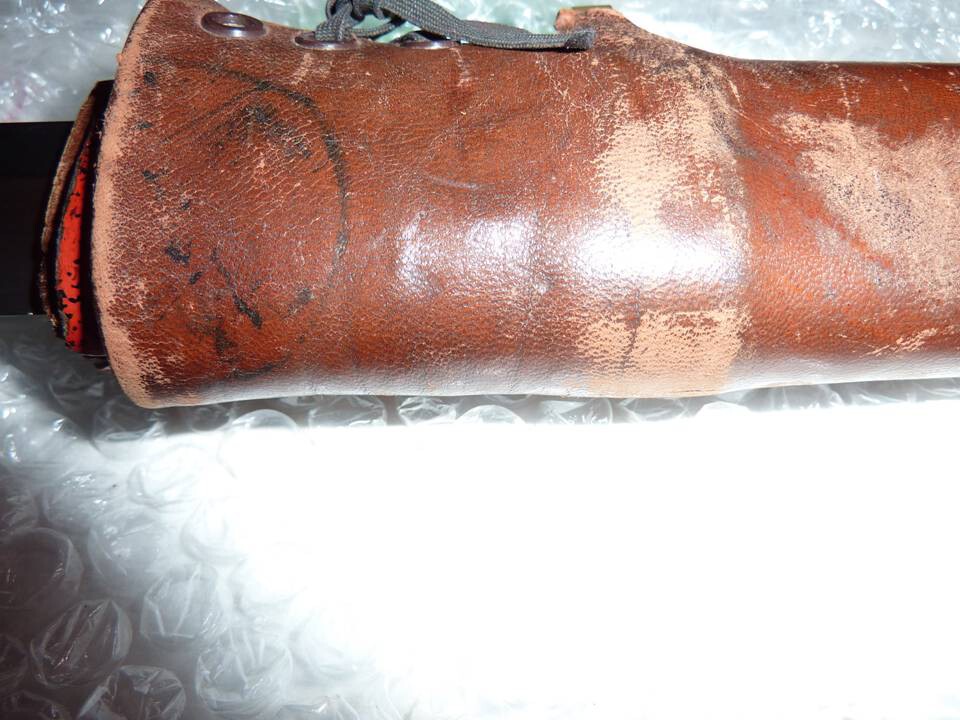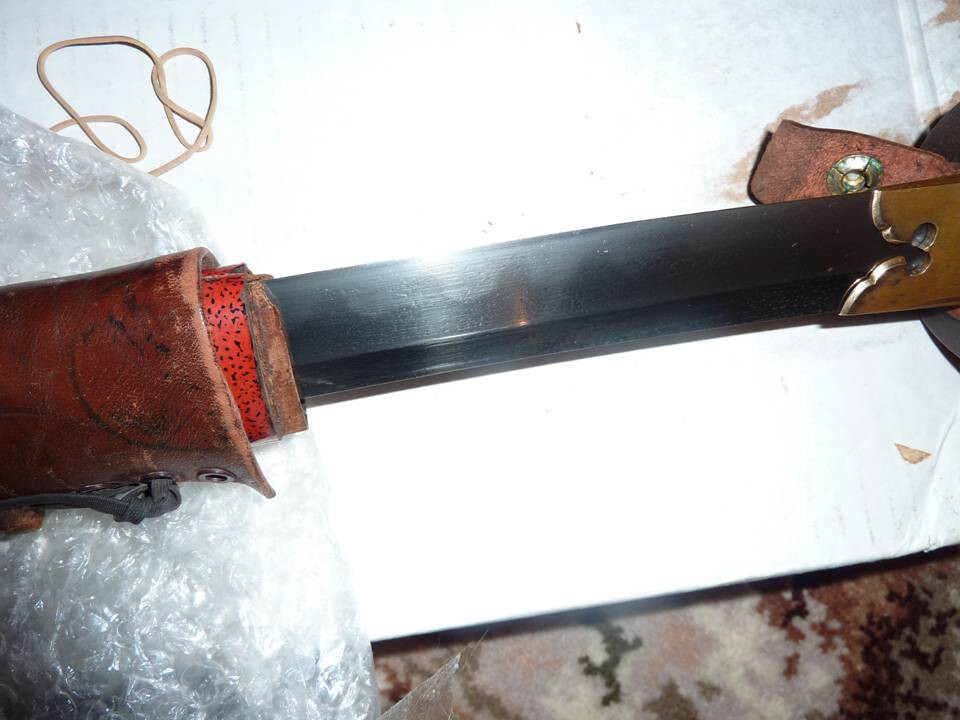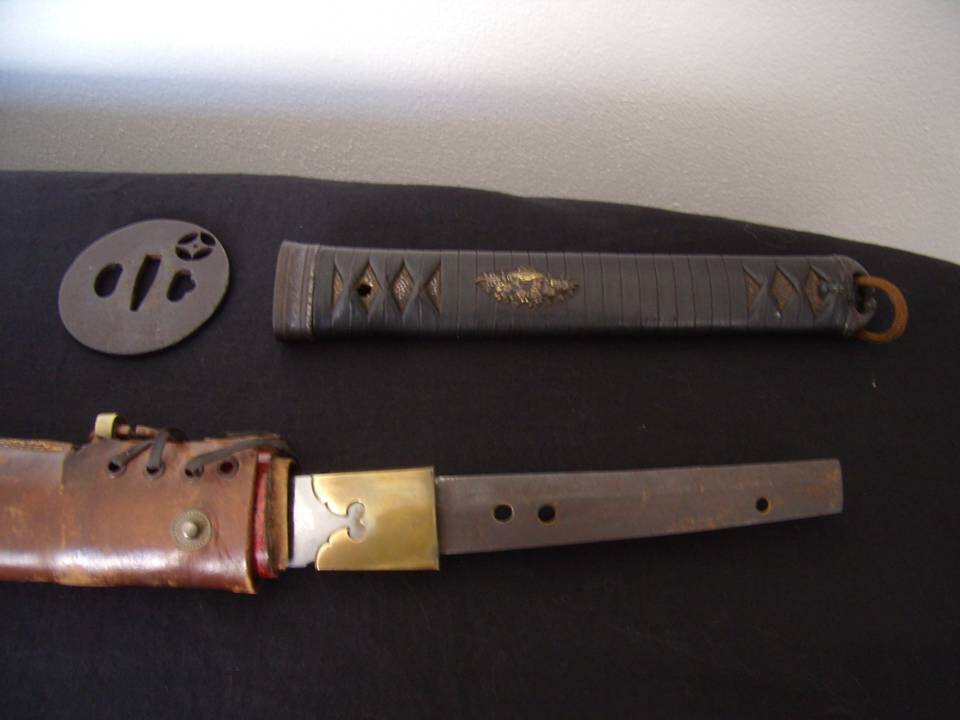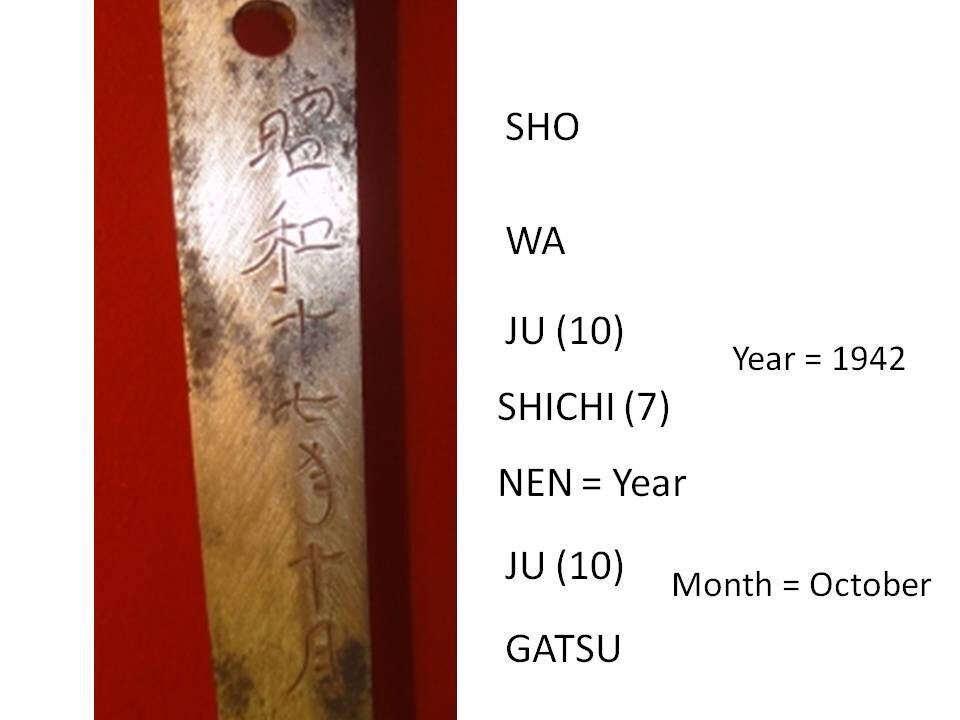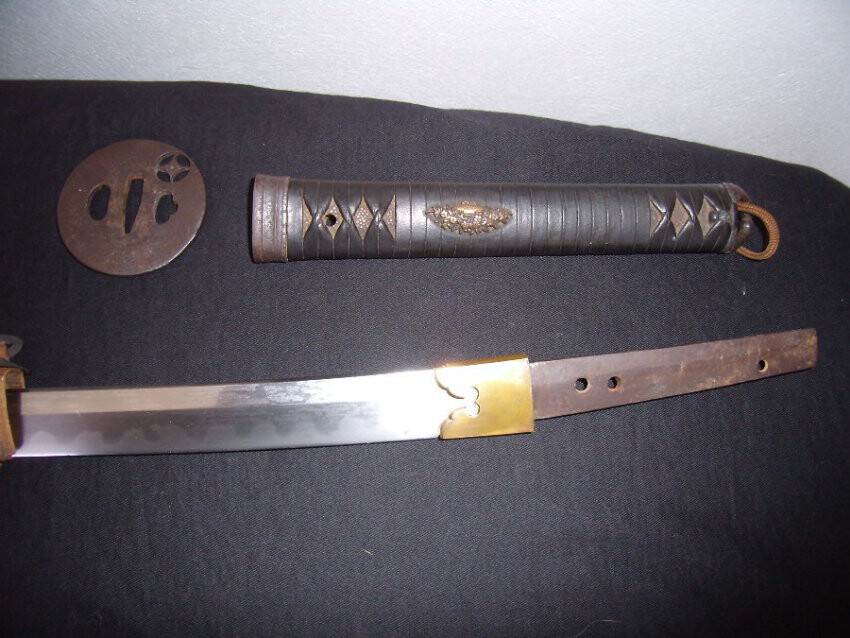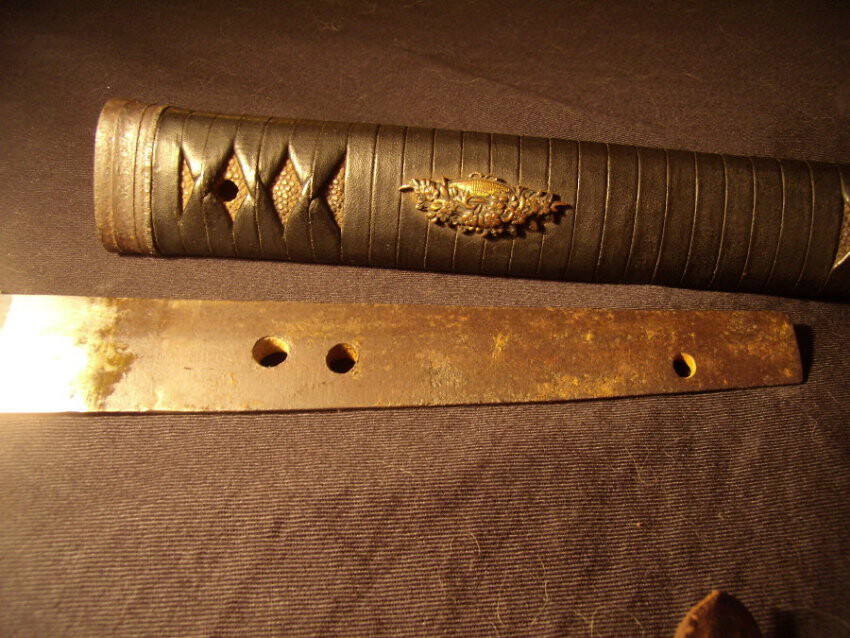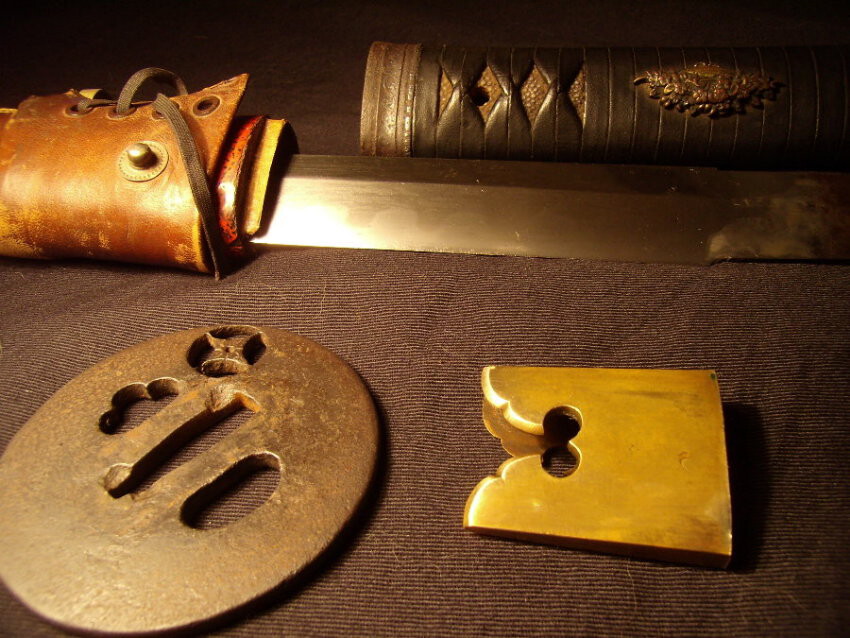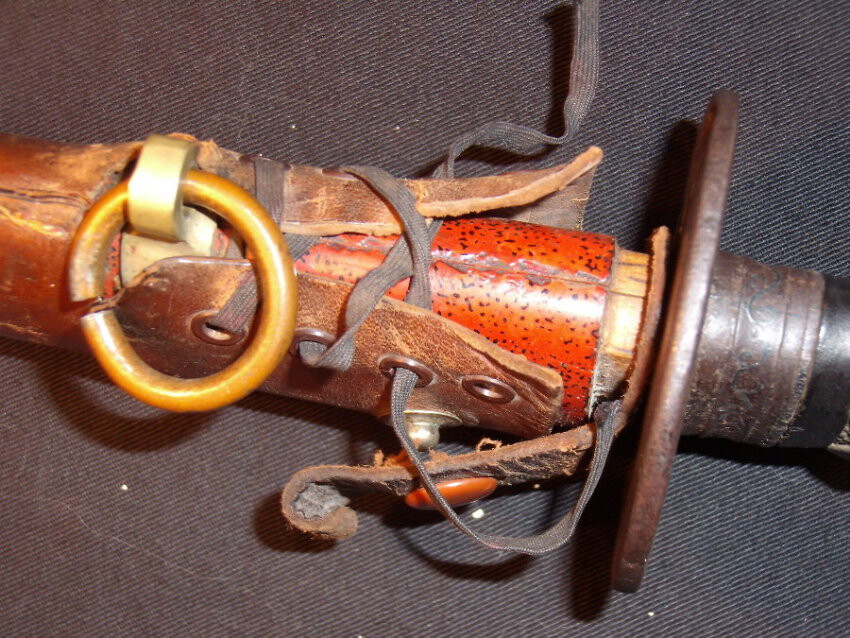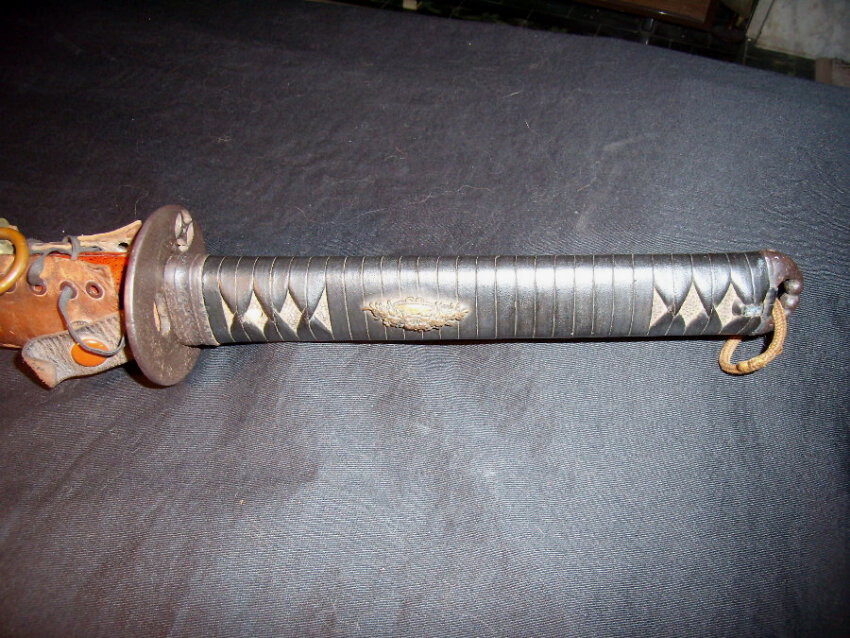
sil
Members-
Posts
17 -
Joined
sil's Achievements
-
Jim, The oshigata you provided in your last two posts have been definitely valuable. Nothing like seeing a range of mei from the same smith to get a gauge on what is a normal signature variance versus a possible (hopefully not !) gimei signature. I have noted your two book references and will look to see if I can source some copies. Your assistance has been much appreciated. Now for a bit more reading and research. Sil
-
Hi Jim, Many thanks for the Oshigata. Very helpful but I must admit to struggling to see the subtle differences between the 4th generation you posted and mine. I have posted another photo I took for comparison. Will spend a bit more time investigating over the weekend. Really appreciate your input. Sil
-
Hi Jim, Thanks for your response. Yes, Sil is my first name. I agree that the Nihonto Club provided the most likely source. If the reading of the date on the tang is correct then 4th Generation Kunitsugu fits nicely (1469 - 1487). I believe 2nd generation is (1384 - 1387). Do you have an opinion on the sword date ? Sil
-
Apologies about the pics being horizontal but they were vertical when uploaded ?? Sil
-
Hi, Research so far has the maker as Kunitsugu (4th generation) and date as made in the Bunmei 17 (1485). I believe Kunitsugu was a late Muromachi period smith within the Uda School in Etchu. Can't seem to find much on him though. Can anyone assist with some more detailed information ? Sil
-
Brian, your newly acquired blade looks great to me but is it Showato, machine made, oil quenched versus true gendaito ??? How can you tell ? "The "chippy" style mei almost always indicates Showato, but the hamon doesn't look as uniform as many Showato I have seen. Perhaps a higher grade of Showato or hopefully a Gendaito." "does this sword have an arsenal stamp on the tang? If so, it's probably 99.9% it's a showato. Even without the stamp, it's still probably a showato. Can you see the Hada yourself?" "Another way to tell if it's a showato, is to check the Habuchi with a Jewelers glass. Water quenched blades have individual crystals, compared to oil tempered blades which appear homogenous." Now isn't the above true to the spirit of this forum ? Providing tips and guidance for new players. I vote for the continued and constructive sharing of the vast knowledge base of expert forum members for the benefit of newbies including me !! Sil
-
Chris, Have sent you an a more detailed email re this question but for the forum interest a bit more information to give context to my question. The sword I reference in the post was purchased by me in 2000 from a US dealer and reputedly was secured by a US Lt Col in Luzon sometime during 1945. It came with a general officer tassel as well as a dress belt. The basis of my NMB question was to see if the combat cover marking was consistent with the type of marking that may have been stamped by the cover maker at the time the cover was fitted to the civilian sword, that is, prior to the owner's departure to active service leading to Luzon, OR, is the marking consistent with one that may have been applied to a sword sourced directly from Japan after the end of the war (ie. a customs type stamp) which would indicate that the sword did not come from Luzon. My poorly framed NMB question would not have given this context. I appreciate that the writing is hardly legible but I was hoping that the overall stamp view may have given a clue as to who applied it and why. Sil
-
Any ideas as to what this combat cover marking is would be much appreciated ? Unfortunately a lot of the writing is worn. I am researching a mumei katana picked up in Luzon during 1945 so hoped that this might add another piece of information to the puzzle. Sil
-
Todd. I re-read my RIKUGUN JUMEI TOSHO smiths paper and found the following entry "Noshu ju (Murayama) Kanetoshi (star + Seki stamp)" which tallies with your comments as well as my confusion with SHU versus province. Thanks for your assistance. This forum is an excellent ! Sil
-
I have recently acquired a star stamped katana by Kanetoshi. From my research of RIKUGUN JUMEI TOSHO smiths, there appears to be two possibilities (Shoka or Murayama). I believe the sword was made in October 1942 (?) but I am unsure of reading the smith's name. The 2nd character from the star stamp looks like SHU, which means it would be part of a province name (?), or else it is part of the smith's name which doesn't seem to tally with the two options. Could some kind person assist and put me out of my misery !! Many thanks in advance. Sil
-
I found this site on writing kanji. Might be of interest and assistance. http://www.dartmouth.edu/~kanji/ Sil
-
When I posted this topic I was very aware that it was a difficult task but I needed some guidance as to how to approach it. I have invested in a modest nihonto library so can now continue my research. Two major findings to date are how much Nihonto knowledge I lack and how difficult it is to take good photos ! Once again, sincere thanks to all who have contributed to this discussion. No doubt I will be back in the near future with many more questions. Sil L
-
Finally some close up photos that are reasonable and show the level of detail requested ! I hope it might assist in shedding more light on the possible school or maker. Thanks again for all the advice. Sil L Katana Detail Photos.pdf
-
Thanks for the responses thus far. I fully appreciate that it takes many years of study to accurately date a sword as well as identify its maker. I enjoy the research and back ground reading so its should be fun. It certainly helps to get guidance along the way. Its late Sunday night in Australia so it may take a day or so to get some decent shots of the whole blade. Will do my best. I will also take some measurements and post these as well. Based on the photos, is it possible to roughly date the fittings (tsuba, menuki, handle wrap) ? Sil L
-
I recently purchased a katana with no signature. Being new to Nihonto study, I am interested in understanding how one goes about the task of researching the possible maker without getting it professionally assessed or papered in Japan or is this not possible. I have atached a few photos which give a reasonable view of the sword. I am happy to take more specific photos if this helps. Thus far I have reached the following conclusions: 1) It has civillian saya and mounts, with low - medium quality tsuba and fuchi. Leather cover fitted for war use. 2) Mumei tang shows "old" rusting. Has been shortened at some stage due to number of mekugi holes and squared off end. 3) According to Yumoto's book, it has a " billowing " temperline and looks traditionally made. Hard to see much more without giving it a good polish I suspect. 4) Leather wrapping on tsuka with a good quality menuki. Does the menuki date the sword ? This where I come to a full stop ! I would be most gratefull for any advice or comments from the NMB, including advice that further research on the possible maker is best left to a Nihonto professional. Sil L


